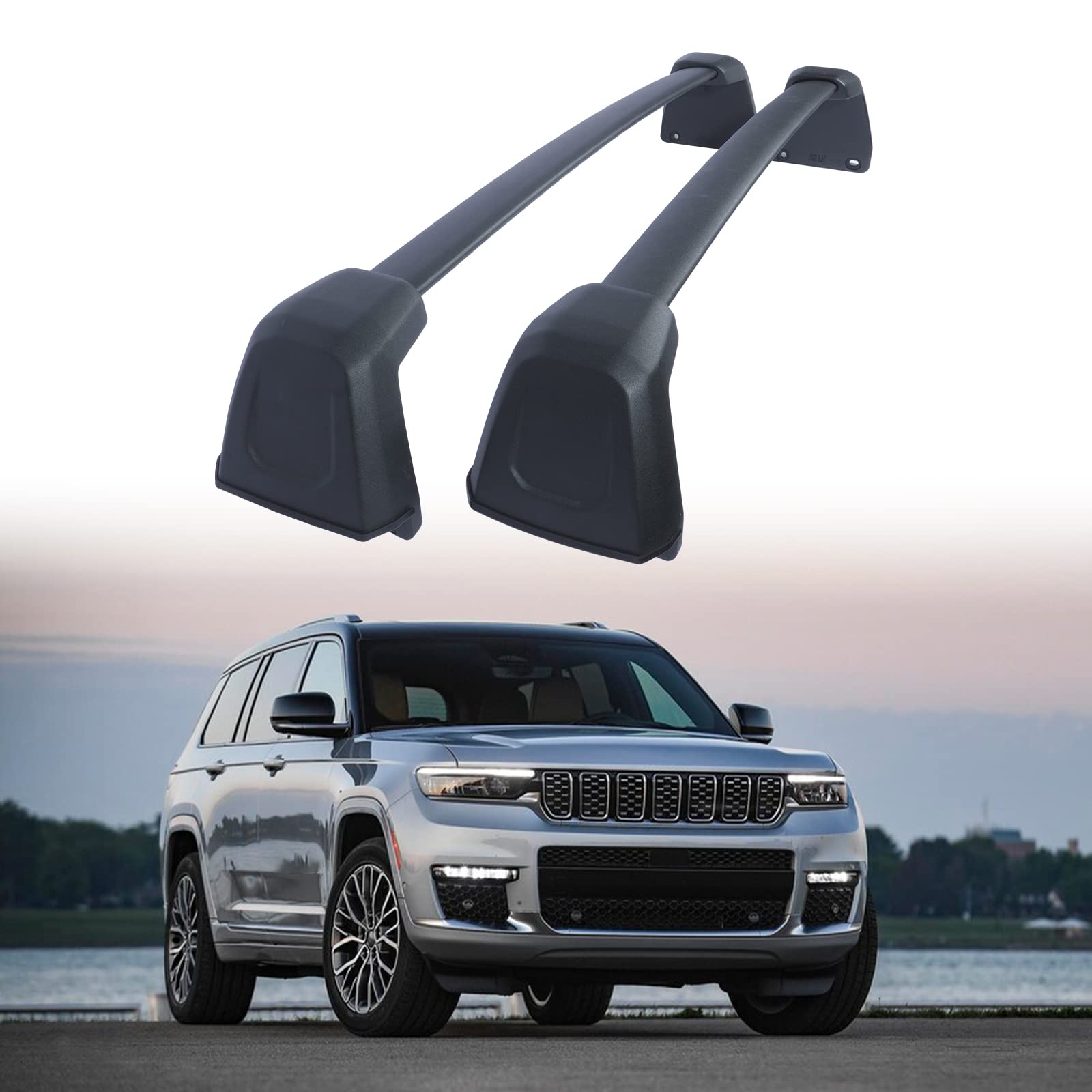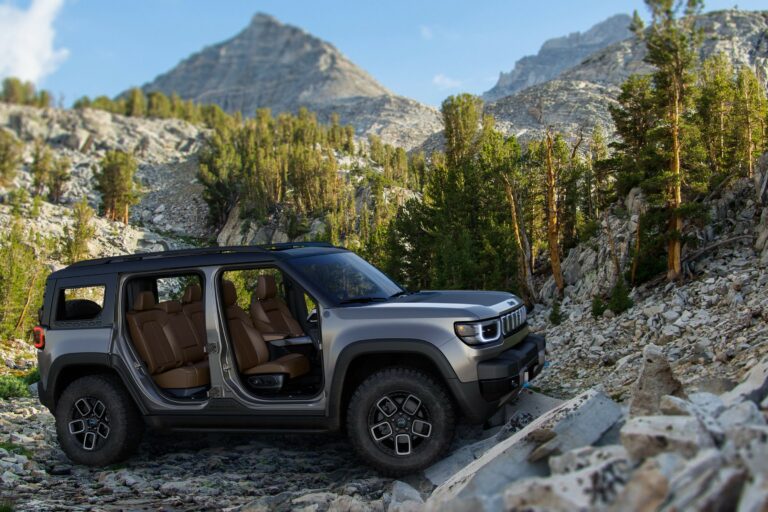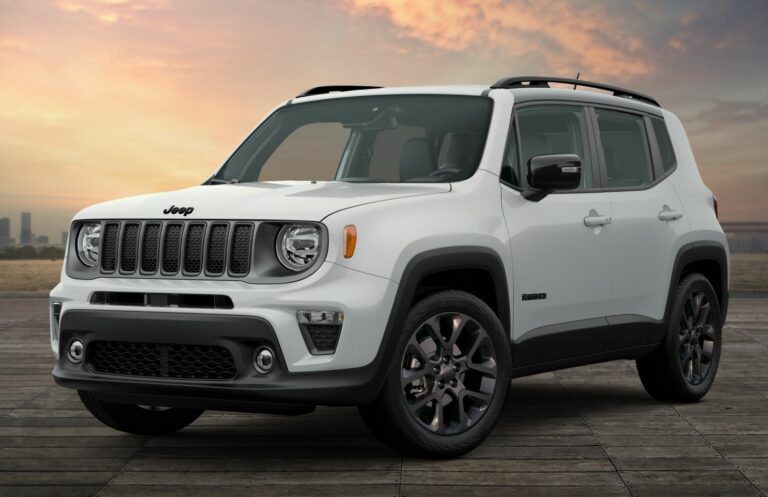Jeep Grand Cherokee Roof Rack: Expanding Your Adventure Horizon
Jeep Grand Cherokee Roof Rack: Expanding Your Adventure Horizon jeeps.truckstrend.com
The Jeep Grand Cherokee is renowned for its blend of rugged capability and refined comfort, making it a popular choice for both daily commutes and adventurous escapades. While its interior offers ample space for passengers, serious adventurers and families often find themselves limited when it comes to hauling oversized gear. This is where a Jeep Grand Cherokee Roof Rack becomes an indispensable accessory. Far more than just a set of bars on your roof, a well-chosen roof rack system transforms your Grand Cherokee into a highly versatile utility vehicle, enabling you to transport everything from kayaks and mountain bikes to extra luggage and camping equipment, all while keeping your interior clean, spacious, and ready for the next journey.
A roof rack system for your Jeep Grand Cherokee provides a secure and elevated platform for carrying gear that wouldn’t fit inside the vehicle. It’s an essential upgrade for outdoor enthusiasts, road-trippers, and anyone needing extra cargo capacity, unlocking a new level of functionality and freedom for your vehicle.
Jeep Grand Cherokee Roof Rack: Expanding Your Adventure Horizon
Understanding the Jeep Grand Cherokee Roof Rack System
Before diving into the myriad of options, it’s crucial to understand the fundamental components and considerations for a Grand Cherokee roof rack.
Components: Most roof rack systems consist of a few key elements:
- Side Rails: Many Grand Cherokee models come equipped with factory-installed side rails running front-to-back along the roof. These serve as the foundation for attaching crossbars. If your Grand Cherokee does not have factory side rails, aftermarket solutions are available that mount directly to the roof’s fixed points or door frames.
- Crossbars: These are the horizontal bars that span across the width of your vehicle, connecting to the side rails or directly to the roof. They are the primary attachment point for various carriers and accessories. Crossbars come in different profiles (square, round, aerodynamic) and materials (steel, aluminum).
- Mounting Hardware/Towers: These are the feet or towers that securely connect the crossbars to your vehicle’s side rails or roof. The specific type of mounting hardware depends on your Grand Cherokee’s roof type and the chosen crossbar system.

Weight Capacity: This is perhaps the most critical consideration. Roof rack systems have two main weight limits:
- Dynamic Load Capacity: The maximum weight the rack can safely carry while the vehicle is in motion. This includes the weight of the rack itself plus your cargo. For Grand Cherokees, this typically ranges from 150-220 lbs (68-100 kg), but always check your vehicle’s owner’s manual and the rack manufacturer’s specifications.
- Static Load Capacity: The maximum weight the rack can support when the vehicle is stationary. This is particularly important if you plan to use a rooftop tent, as it needs to support the tent’s weight plus the occupants. Static load capacities are significantly higher than dynamic limits, often ranging from 400-800 lbs (180-360 kg) or more.

Always adhere to the lowest weight limit among your vehicle’s roof, the rack system, and the specific attachment you are using. Overloading can be extremely dangerous and cause damage.
Benefits of Installing a Roof Rack on Your Grand Cherokee
The advantages of adding a roof rack to your Grand Cherokee extend far beyond simply increasing cargo space:
- Expanded Cargo Capacity: This is the primary benefit. You can transport items that are too long, bulky, or dirty for your vehicle’s interior, such as skis, snowboards, surfboards, kayaks, canoes, bicycles, lumber, ladders, and large camping gear.
- Preserves Interior Space: By moving gear to the roof, you free up valuable interior space for passengers and smaller, more delicate items, making long trips more comfortable and less cluttered.
- Protects Your Interior: Transporting dirty or wet gear (like muddy bikes or sandy beach equipment) on the roof prevents damage, stains, and odors inside your vehicle.
- Versatility for Outdoor Activities: A roof rack opens up a world of possibilities for outdoor adventures. Whether you’re into biking, paddling, skiing, camping, or simply need to haul supplies for home projects, a roof rack makes it feasible.
- Enhanced Vehicle Utility and Appearance: A well-chosen roof rack can complement the rugged aesthetic of the Grand Cherokee, adding to its adventure-ready look. More importantly, it significantly boosts the vehicle’s functional utility.
- Secure Transportation: Specialized attachments for bikes, kayaks, or cargo boxes offer secure locking mechanisms, protecting your valuable gear from theft and ensuring it stays put during transit.

Types of Jeep Grand Cherokee Roof Racks and Their Uses
The term "roof rack" can refer to a complete system or various attachments. For the Grand Cherokee, here are the main types:
- Crossbar Systems: These are the foundation. They consist of two horizontal bars (and their mounting feet) that attach to your Grand Cherokee’s factory side rails or directly to the roof.
- Uses: Ideal for carrying individual items like skis, snowboards, surfboards directly with specific straps, or as the base for all other specialized carriers (bike racks, kayak racks, cargo boxes/baskets).
- Roof Cargo Baskets (Roof Baskets): These are open-air, framed containers that mount on top of your crossbars. They typically have a mesh or slatted bottom and raised sides.
- Uses: Perfect for bulky, oddly shaped, or muddy gear that doesn’t need weather protection, such as camping equipment, spare tires, recovery gear, or firewood. Items must be secured with cargo nets or straps.
- Roof Boxes (Cargo Boxes): These are enclosed, hard-shell containers that provide weather-protected and lockable storage. They come in various sizes and shapes, often aerodynamic.
- Uses: Excellent for luggage, camping gear, skis, snowboards, and other items that need to be kept dry, clean, and secure from theft. They greatly reduce wind noise compared to open baskets.
- Platform Racks: These are heavy-duty, flat, and often modular platforms that cover a significant portion of the roof. They mount directly to the roof or to robust crossbar systems.
- Uses: Highly versatile for carrying large, heavy, or multiple items, including rooftop tents, large expedition gear, multiple jerry cans, or even custom setups. They offer numerous attachment points.
- Specialized Carriers (Attachments): These are accessories that mount onto your crossbars to hold specific items:
- Bike Racks: Available in various styles (fork mount, wheel mount, upright frame clamp) to carry bicycles securely.
- Kayak/Canoe Racks: Options include J-style cradles, saddle systems, or stackers for multiple boats.
- Ski/Snowboard Racks: Designed to hold multiple pairs of skis or snowboards securely.
- Surfboard/SUP Carriers: Specific cradles or pads to transport boards without damage.
Choosing the Right Roof Rack for Your Grand Cherokee
Selecting the perfect roof rack involves assessing your specific needs and your vehicle’s characteristics:
- Identify Your Grand Cherokee’s Roof Type: Does it have factory side rails? Are they flush or raised? This dictates the type of mounting system you’ll need. Note your vehicle’s year and trim level as roof designs can vary.
- Determine Your Primary Use: What will you be carrying most often?
- Occasional bikes/kayaks: A basic crossbar system with appropriate specialized carriers will suffice.
- Camping gear/bulky items: A cargo basket might be ideal.
- Luggage/ski trips needing weather protection: A cargo box is best.
- Rooftop tent/heavy expedition gear: A robust platform rack is likely required.
- Consider Weight Capacity: Always factor in the weight of your gear, plus the weight of the rack itself, and compare it against your Grand Cherokee’s dynamic load limit. If a rooftop tent is in the plans, pay close attention to static load limits.
- Budget: Roof rack systems vary widely in price. Set a realistic budget, remembering that investing in quality often means better durability, security, and quieter operation.
- Material and Durability: Aluminum racks are lightweight and corrosion-resistant, while steel offers maximum strength for heavy-duty applications.
- Ease of Installation and Removal: Some systems are designed for quick attachment/detachment, while others are more permanent. Consider how often you’ll need to remove it.
- Noise and Fuel Economy: Aerodynamic crossbars and cargo boxes significantly reduce wind noise and have less impact on fuel economy compared to square bars or open baskets. A wind fairing can further mitigate noise.
Installation Guide: Getting Your Grand Cherokee Roof Rack Ready
While specific steps vary by brand and model, the general process for installing a Grand Cherokee roof rack is straightforward for most DIYers:
- Read the Instructions: This is paramount. Every roof rack system comes with detailed instructions. Read them thoroughly before starting.
- Gather Tools: Most installations require basic hand tools (Allen wrenches, screwdrivers), often supplied by the manufacturer. A tape measure is useful for ensuring even spacing.
- Identify Mounting Points: For Grand Cherokees with factory side rails, the crossbars typically clamp onto these rails. For models without rails, the feet might attach to fixed points under trim pieces on the roof or clamp into the door frames.
- Assemble Crossbars and Towers: Attach the towers (feet) to the crossbars according to the instructions. Ensure the correct bar length is used for front and rear, if applicable.
- Position on Roof: Carefully place the assembled crossbar units onto your Grand Cherokee’s roof. For models with factory rails, slide them into position. For fixed-point mounts, align them with the designated points.
- Secure and Tighten: Following the manufacturer’s torque specifications, tighten all bolts and clamps. Work evenly, alternating between sides, to ensure a secure and level fit. Do not overtighten.
- Attach Accessories (If Applicable): Once the crossbars are secure, you can mount your cargo basket, box, or specialized carriers. Again, follow the specific instructions for each accessory.
- Double-Check: Before driving, give everything a good shake and re-check all connections to ensure they are tight and secure. It’s also a good practice to re-check after the first short drive.
Practical Advice:
- Always enlist a second person for help, especially when lifting long or heavy components, to prevent damage to your vehicle or the rack.
- Place a blanket or towel on your roof during installation to protect the paint finish.
- Use painter’s tape to mark positions for precise alignment, especially if you plan to remove and re-install often.
Maintenance and Best Practices for Your Grand Cherokee Roof Rack
Proper care ensures your roof rack remains functional and safe for years to come:
- Regular Inspection: Periodically check all bolts, clamps, and straps for tightness, especially before and after long trips. Vibrations and temperature changes can cause fasteners to loosen.
- Clean Regularly: Wash the rack and its components with mild soap and water, especially after exposure to road salt, dirt, or harsh weather. This prevents corrosion and keeps moving parts free.
- Lubricate Moving Parts: If your rack has adjustable or moving components, a light lubricant can ensure smooth operation.
- Remove When Not in Use: If you don’t use your roof rack frequently, consider removing it. This improves fuel economy, reduces wind noise, and minimizes wear and tear on the rack and your vehicle’s roof.
- Check Load Security: Always ensure your cargo is properly secured with straps, nets, or locks. Periodically check tension during long drives.
- Be Mindful of Height: Remember that adding a roof rack, and especially cargo, increases your Grand Cherokee’s overall height. Be aware of low clearances in garages, carports, drive-thrus, and underpasses.
Common Challenges and Solutions
Even with a well-chosen roof rack, you might encounter a few common issues:
- Wind Noise: Aerodynamic crossbars significantly reduce noise compared to square bars. Adding a wind fairing (a plastic shield that deflects air) can further minimize whistling or humming. Removing the rack when not in use also eliminates noise.
- Impact on Fuel Economy: Any object on your roof creates drag, leading to a decrease in fuel efficiency. The impact is more significant with bulky items like cargo baskets or large, non-aerodynamic boxes. The solution is to remove the rack or large attachments when not needed.
- Scratching Paint: Careless installation or improper loading can scratch your Grand Cherokee’s paint. Always be gentle, use protective tape where the rack contacts the roof, and ensure no sharp edges of cargo are rubbing.
- Overloading: Exceeding weight limits is dangerous. Always know your rack’s and vehicle’s weight capacities. Distribute weight evenly and place heavier items lower and closer to the crossbars.
- Theft: While crossbars are generally difficult to remove without tools, specialized carriers and cargo boxes often come with integrated locks. Always lock your valuable gear.
Price Table: Jeep Grand Cherokee Roof Rack Systems & Accessories
Please note: Prices are estimated and can vary significantly based on brand, specific model, materials, features, retailer, and any ongoing sales or promotions. Installation costs (if professional installation is desired) are not included.
| Roof Rack Type/Category | Description & Features | Estimated Price Range (USD) | Common Brands/Examples |
|---|---|---|---|
| Basic Aftermarket Crossbars | Entry-level, steel or aluminum, often square/round bars. Good for occasional use. | $100 – $300 | Budget brands (e.g., BRIGHTLINES, ROLA), specific model fit |
| Premium Aerodynamic Crossbars | Sleek design, reduced wind noise, T-slot compatibility. Often aluminum. | $300 – $600 | Thule, Yakima, Rhino-Rack, Mopar (OEM) |
| Roof Cargo Baskets (Small/Medium) | Open-air storage for bulky gear. Steel or aluminum. | $200 – $500 | Thule Canyon XT, Yakima LoadWarrior, Curt, Rola |
| Roof Cargo Baskets (Large/Heavy-Duty) | Larger capacity, often with extensions available. | $400 – $800+ | Thule Trail XT, Yakima MegaWarrior, Front Runner Slimline II |
| Enclosed Cargo Boxes (Medium) | Weather-resistant, lockable storage (approx. 13-16 cu ft). | $400 – $800 | Thule Force XT M/L, Yakima SkyBox 16, SportRack |
| Enclosed Cargo Boxes (Large/XL) | High-capacity, aerodynamic, lockable (approx. 18-22+ cu ft). | $700 – $1500+ | Thule Motion XT, Yakima GrandTour, Inno |
| Platform Racks | Flat, versatile surface for rooftop tents, large gear. Heavy-duty construction. | $700 – $1500+ | Front Runner Slimline II, Rhino-Rack Pioneer, Prinsu |
| Specialized Carriers (Add-on to Crossbars) | |||
| – Bicycle Racks (Fork/Wheel Mount) | Carries 1-2 bikes on crossbars. | $150 – $300 per bike | Thule, Yakima, Kuat |
| – Kayak/Canoe Carriers (J-style/Saddle) | Secures 1 kayak/canoe. | $100 – $300 per boat | Thule, Yakima, Malone |
| – Ski/Snowboard Carriers | Holds multiple skis/snowboards. | $100 – $250 | Thule, Yakima |
Frequently Asked Questions (FAQ) about Jeep Grand Cherokee Roof Racks
Q1: Do all Jeep Grand Cherokees come with roof rails?
A1: No, it depends on the specific trim level and model year. Many Grand Cherokee models have factory-installed side rails, but some base models or specific trims might not. Always check your vehicle’s specifications. If your Grand Cherokee doesn’t have factory rails, aftermarket roof rack systems are available that mount directly to the roof’s fixed points or door frames.
Q2: How much weight can a Jeep Grand Cherokee roof rack hold?
A2: The dynamic (while driving) weight capacity for most Grand Cherokee roof racks typically ranges from 150 to 220 pounds (68-100 kg). However, this can vary based on your specific Grand Cherokee model year, its factory roof limit, and the roof rack manufacturer’s specifications. Always refer to your vehicle’s owner’s manual and the roof rack’s manual for the exact limits. Static (when parked) load capacity is much higher, especially important for rooftop tents, often ranging from 400-800+ lbs.
Q3: Does a roof rack affect gas mileage on my Grand Cherokee?
A3: Yes, adding a roof rack, especially with cargo, will generally increase aerodynamic drag and slightly decrease your fuel economy. The impact is more noticeable with bulkier items like open cargo baskets or large, non-aerodynamic boxes. Removing the roof rack when it’s not in use can help mitigate this effect.
Q4: Can I install a Jeep Grand Cherokee roof rack myself?
A4: Most aftermarket roof rack systems for the Grand Cherokee are designed for DIY installation and come with detailed instructions. You’ll typically need basic hand tools. However, for more complex systems or if you’re unsure, professional installation by an automotive accessory shop is always an option.
Q5: How do I prevent wind noise from my roof rack?
A5: Wind noise is a common concern. Choosing aerodynamic crossbars (often teardrop or wing-shaped) can significantly reduce noise compared to square or round bars. Many manufacturers also offer wind fairings (a plastic shield that attaches to the front crossbar) that effectively deflect air and minimize whistling or humming. Proper installation, ensuring all components are tight, also helps.
Q6: Is it safe to go through an automatic car wash with a roof rack?
A6: It’s generally not recommended to go through automatic brush-style car washes with a roof rack, especially with accessories like cargo boxes or baskets attached. The brushes can snag or damage the rack components. Touchless automatic car washes might be safer, but it’s still best practice to remove any large attachments. Hand-washing is always the safest option.
Q7: Can I put a rooftop tent on my Jeep Grand Cherokee?
A7: Yes, many Grand Cherokee owners successfully mount rooftop tents. However, it’s crucial to ensure your roof rack system and your vehicle’s roof have a sufficient static weight capacity to support the tent’s weight plus the occupants. You’ll typically need a robust platform rack or heavy-duty crossbars for this application. Always verify the weight limits of all components involved.
Conclusion
A Jeep Grand Cherokee roof rack is much more than an accessory; it’s an investment in your vehicle’s versatility and your capacity for adventure. By carefully selecting the right system for your needs, understanding its capabilities, and committing to proper installation and maintenance, you can dramatically expand your Grand Cherokee’s utility. Whether you’re hauling gear for a weekend camping trip, transporting bikes to your favorite trails, or simply freeing up interior space for a comfortable road trip, a well-chosen roof rack ensures your Grand Cherokee is always ready for whatever journey lies ahead. Embrace the freedom and functionality that a robust roof rack system offers, and truly unlock the full potential of your Jeep Grand Cherokee.




